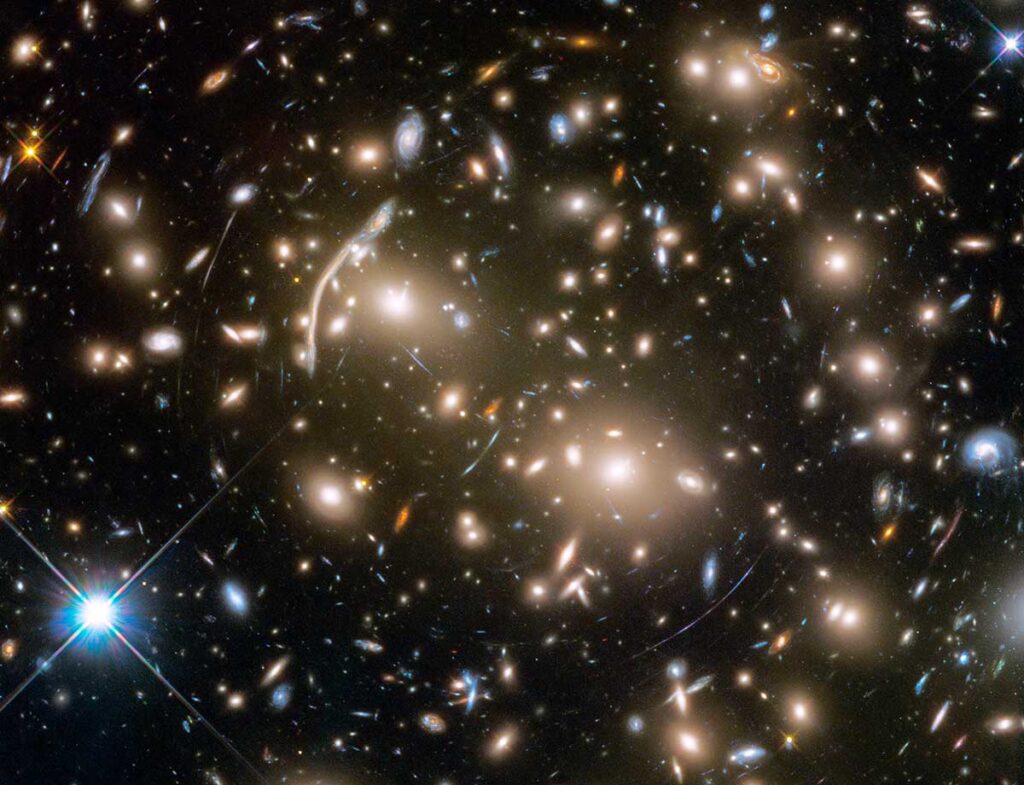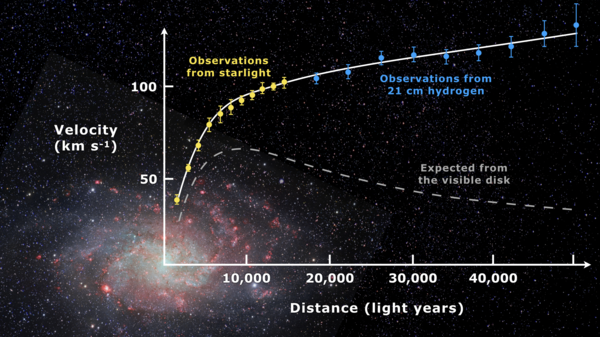In the vast cosmic tapestry, there exists a mysterious substance that eludes direct detection. This enigmatic entity is known as dark matter. Among the various flavors of dark matter, cold dark matter (CDM) stands out as a leading candidate for the missing mass in our universe.

What Is Cold Dark Matter?
- Hypothetical Nature: CDM is a hypothetical type of dark matter. It interacts very weakly with ordinary matter and electromagnetic radiation, earning its “dark” moniker. Unlike the familiar baryonic matter (which forms stars, planets, and living organisms), CDM remains elusive and hidden from our direct observations.
- Vanishing Equation of State: The term “cold” refers to the fact that CDM particles move sluggishly compared to the speed of light. Their equation of state practically vanishes, making them distinct from other forms of matter.
- Cosmic Composition: According to the Lambda-CDM model, approximately 27% of the universe consists of dark matter, while 68% is dark energy. The remaining fraction constitutes the ordinary baryonic matter. CDM plays a crucial role in shaping the cosmic structure we observe today.
Structure Formation: Hierarchical Growth
In the cold dark matter theory, cosmic structures emerge through a hierarchical process:
- Small Objects First: Density fluctuations in the early universe lead to the collapse of small objects under their self-gravity. These primordial density perturbations serve as seeds for structure formation.
- Continuous Merging: Objects merge continuously, forming larger and more massive structures. Galaxies, galaxy clusters, and cosmic filaments emerge from this intricate dance of gravitational attraction.
- Agreement with Observations: Predictions of the CDM paradigm align well with observations of large-scale cosmic structures. The intricate web of galaxies, voids, and superclusters we see today owes its existence to the hierarchical growth fueled by cold dark matter.
Candidates for CDM:
- Axions: These very light particles possess specific self-interactions, making them suitable CDM candidates. Axions also address the strong CP problem in quantum chromodynamics.
- Primordial Black Holes: These hypothetical black holes formed in the early universe could contribute to the dark matter content.
- Weakly Interacting Massive Particles (WIMPs): Although not directly detected, WIMPs remain a prominent contender. Their weak interactions with ordinary matter make them ideal dark matter candidates.
The Quest Continues:
While we unravel the cosmic mysteries, cold dark matter remains an essential piece of the cosmic puzzle. Its gravitational influence shapes the universe’s grand tapestry, weaving together galaxies, clusters, and cosmic filaments. As we peer deeper into the cosmos, we strive to uncover the true nature of this elusive substance.
Remember, the universe’s hidden depths hold secrets waiting to be revealed, and cold dark matter whispers its enigma across the cosmic expanse.

What is the difference between cold and warm dark matter?
Let’s explore the intriguing distinctions between cold dark matter (CDM) and warm dark matter (WDM):
- Cold Dark Matter (CDM):
- Nature: CDM consists of slow-moving particles that interact primarily through gravity. These particles move sluggishly compared to the speed of light.
- Role in Structure Formation: CDM played a pivotal role in shaping the cosmic structures we observe today. It helped build galaxies, galaxy clusters, and cosmic filaments.
- Examples: WIMPs (Weakly Interacting Massive Particles) fall into the CDM category. They are heavy and slow-moving.
- Speed and Structure: CDM particles smoothed out existing cosmic structures due to their slower motion. They contributed to the hierarchical growth of galaxies and clusters.
- Warm Dark Matter (WDM):
- Nature: WDM particles are slightly lighter and faster than CDM particles. They also interact weakly with ordinary matter.
- Role in Structure Formation: WDM falls in between CDM and hot dark matter. It influences structure formation both from above and below its free-streaming scale.
- Examples: Sterile neutrinos are considered warm dark matter candidates.
- Speed and Structure: WDM particles have a moderate speed, impacting the formation of smaller structures.
- Hot Dark Matter (HDM):
- Nature: HDM consists of fast-moving particles. Their interactions with ordinary matter are minimal.
- Role in Structure Formation: HDM would have traveled far in the early universe, smoothing out existing structures.
- Examples: Relic neutrinos from the early universe fall into the HDM category.
- Speed and Structure: HDM particles contributed to the overall cosmic energy density but did not play a significant role in forming smaller structures.
In summary, CDM builds galaxies, WDM lies in between, and HDM smooths out cosmic structures. Each type of dark matter leaves its unique imprint on the cosmic tapestry, weaving together the unseen threads of our universe.
How can we detect CDM?
The search for cold dark matter (CDM), despite its elusive nature, has been a fascinating task for astronomers.
Here are some of the methods used to detect its presence indirectly:
- Gravitational effect: The primary interaction of dark matter is gravitational. Although we cannot see it directly, we can see its effects on stars and galaxies. Two major approaches:
- Galactic dynamics: By studying the motion of stars within galaxies, we infer the presence of unseen mass. The observed velocities of the stars in the galaxies do not match what we expected based on visible mass alone. The dark matter provides the missing gravity.
- Galactic clusters: Observations of gravitational interactions between galaxies within massive clusters. The observed interactions are low if only baryonic matter (ordinary matter) is present. The gravitational effect of dark matter bridges this gap.
- Cosmic microwave background (CMB): CMB radiation, a remnant of the early universe, bears the imprint of density
- Weak gravitational mirrors: Dark matter causes light to bend as it passes through the universe. We model its distribution by looking at how the brightness of background galaxies is distorted by the interference of dark matter.
Unlocking Advanced Electronics and Data Storage with Novel Ferroelectricity
